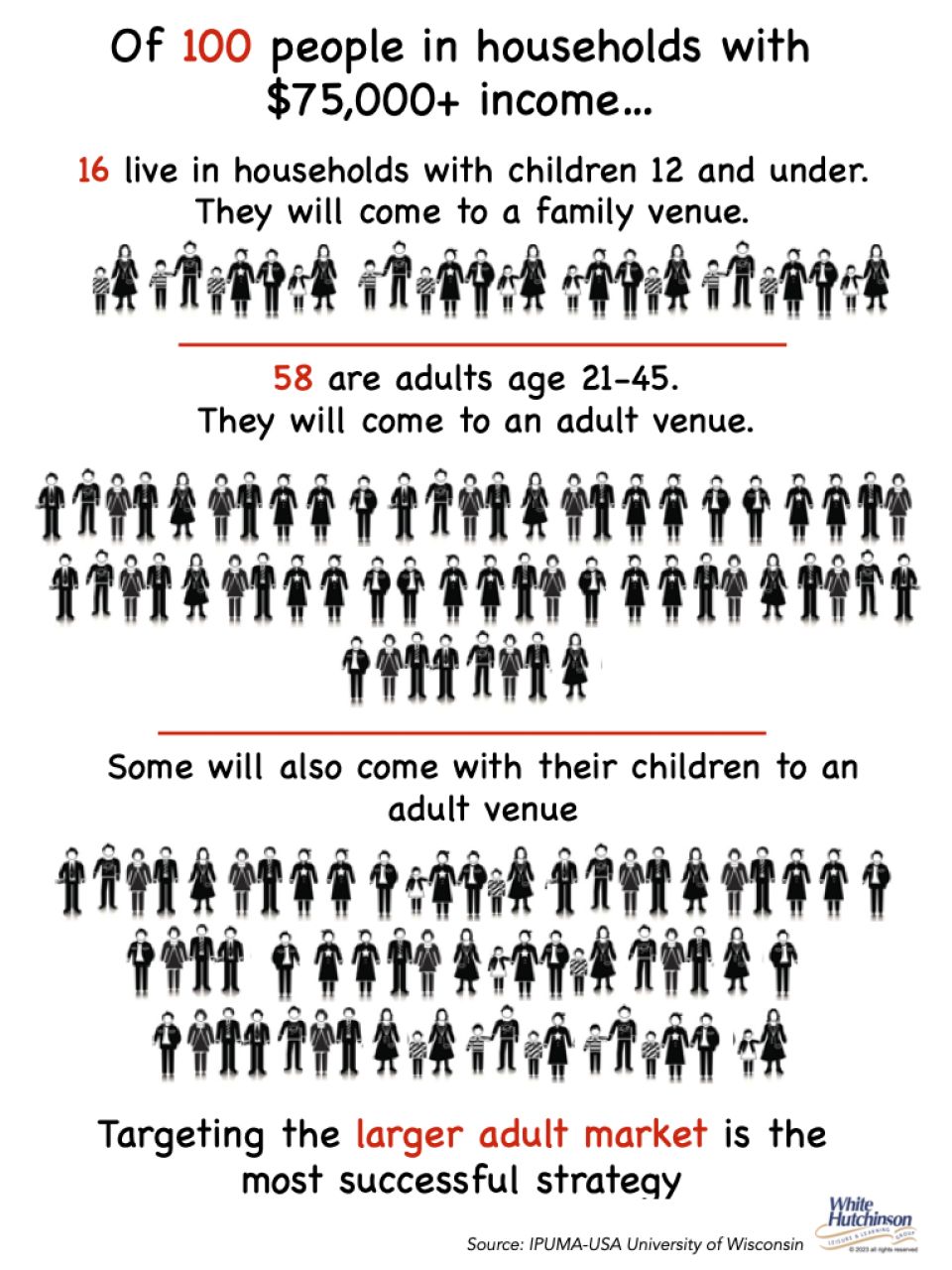
Vol. XXIII, No. 7, July 2023
Families are not the largest market to target
When the family entertainment center (FEC) industry started, everyone thought the formula for success was to offer a little bit of something for everyone, for the entire family, meaning for children and adults. This approach continues to be one of the great myths in the location-based entertainment (LBE) center industry. People think they will have the best chance of success by trying to attract everyone. The problem with this strategy is that when you try to attract everyone, you just end up not being special to anyone. Theme parks are large enough to offer adequate variety to different groups, but LBEs are not. Another issue is that many groups are not compatible, especially in an indoor environment. Crowds of teenagers will drive away both the family and adult markets. Older children don't want to be mixed in with younger children due to the sissy factor. Adult groups aren't attracted to children or family projects.
Although it is counterintuitive to most first-time LBE developers, experience has shown that successful centers focus on one niche market. That is why Chuck E. Cheese's that targets the young children market and Dave & Buster's that targets the adult market, have been around for over 40 years in America and continue to expand. You won't find an alcohol bar or billiards in Chuck E. Cheese's or find children's games such as Whack-a-Mole in Dave & Buster's. That is exactly why they are so successful. They are highly focused on pleasing one market segment.
Yet today we continue to see developers thinking the "family market," adults coming with children, is the largest market. It is not. If we focus on the primary market for both the family and the adult markets, younger adult households with household incomes of $75,000+ who account for almost three-quarters of all spending for fees and admissions at entertainment and art venues (72%), it ends up that the adult market is the largest market. They also have the highest per capita spending.

Subscribe to monthly Leisure eNewsletter


